SUPPLY CHAIN MANAGEMENT
The key material issue associated |
Priority of the |
SDGs |
| Compliance to government regulations | HIGH |




|
| Human rights | HIGH | |
| Ethics and integrity | HIGH | |
| Supply chain sustainability | MEDIUM | |
| Local sourcing | MEDIUM |
Supply chain efficiency is critical in the mining industry and HZL is committed to build long-term relationships with its suppliers. We motivate our suppliers to comply with applicable regulations and encourage more ambitious industry commitments. We empower our suppliers to share responsibility for integrating sustainability and human rights by building their own management systems and internal controls. We are thus able to influence sustainable, positive change throughout the supply chain and the industry.

Our ambition
Creation of an efficient supply chain with focus on technology, innovation and collaboration

Our approach
- HZL’s approach to Supply Chain Management is collaborative and provides opportunities for digitalisation, innovation, cooperation and mutual growth. We encourage our suppliers to go beyond legal compliance by ensuring their commitment to relevant standards. We exchange knowledge and collaborate for continuous improvement.

Strategic priorities
- 360-degree approach to sustainability assessment of partners
- Frequent visits to works and offices of major vendors
- Enlarging our supplier base for de-risking our supply chain
- Introduction of Integrated Transport Management System
Performance in FY 2019
- Migrated most of our processes for supply chain to web-based solutions to minimise the use of paper in offices
- 95% payments are made electronically
- Real-time tracking of material transported
- Reduced inventory level by 9% and averted purchase orders worth I 95 Crore by standardising and aggregating spares requirements
Our approach towards an efficient supply chain management
Our entire operations encompassing activities such as raw material procurement, production, distribution and final delivery to customers - requires an array of physical transactions and processes.
Efficient management of these transactions and processes has a positive impact across the product life cycle and demands that companies work together with their suppliers. Strengthening collaboration with our suppliers provides us opportunities for innovation, co-operation and economic development.
Defining the basic principles - Supplier Code of Conduct
Our Supplier Code of Conduct spells out the fundamental requirements that our suppliers need to respect and adhere to. This code embodies our commitment to internationally recognised standards, including the Core Conventions of the International Labour Organisation, United Nations’ Universal Declaration of Human Rights, as well as, prevalent industry standards, and all other applicable statutory requirements concerning:
- Environment Protection
- Health & Safety
- Child Labour
- Minimum Wages
- Anti-Bribery
- Anti-Corruption
Our supply chain management strategy incorporates processes, which help integrate tenets of sustainability across our value chain.
Strategic approach:
 Supplier identification
and selection
Supplier identification
and selection Identification of key performance
indicators and action areas
Identification of key performance
indicators and action areas Supplier audits
and review
Supplier audits
and review Supplier
engagement
Supplier
engagement Innovation and technology building
supply chain efficiency
Innovation and technology building
supply chain efficiency
Supplier review by senior leadership
Our top management reviews the initiatives towards sustainable supply chain during various monthly review meetings, including the Business Management Group meeting. The business ExCo members review the initiatives as well, during the ExCo (Executive Committee) meetings. Wherever gaps are identified, remedial actions are duly initiated.
Total tier 1 suppliers
1256 and share of total procurement spent is 100%
Total Critical tier 1 suppliers
170 and share of total procurement spent is 60%
Total tier 1 Local suppliers ( Rajasthan Based)
371 and share of total procurement spent is 65%
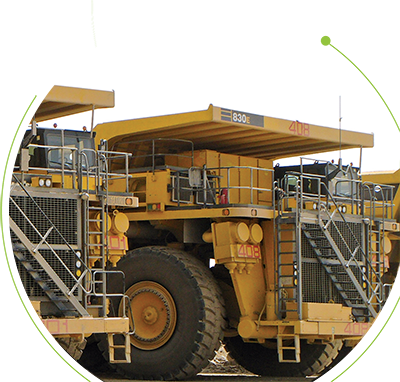
Supplier identification and selection
Supplier identification and qualification are the first two steps in the supplier management process. At HZL, our new supplier selection criteria are based on our sourcing strategy that includes:
| Pre-qualification Form (PQ form) | It covers various questionnaires relating to organisational health, safety policy (OH & S), Environment policy and Personal Protective Equipment (PPE), among others. |
| Field Visits | Employees of safety, commercial and user departments frequently visit the works and offices of major vendors associated. They inspect suppliers' premises for safety, housekeeping, monitoring whether child labour is employed or not, among other aspects. |
| Formalised process of vendor onboarding | This process involves categorisation of vendors based on the supplies. |
The SAP ARIBA, a network based collaboration platform, has made it easy and convenient to connect and share information with our partners and vendor networks in real time. It has added significant value across the entire supply chain lifecycle by enabling efficient onboarding and easy integration, improving transparency and compliance, and allowing scope for broader collaboration.
At the time of supplier selection, the
information submitted through
ARIBA PORTAL
is also assessed.
Vendor qualification criteria
Vendor qualification is based on a pre-qualification form. Only vendors with minimum score of 75% are inducted. Key qualifiers include, quality standards, environmental performance, social performance, health and safety performance, among others.
Identification of key performance indicators and action areas
In order to ensure quality, reliability and sustainability across our value chain, in 2017 we had rolled out a set of key performance indicators with associated action plans.
| Key performance indicators | Action plan | Performance |
|---|---|---|
| Productivity |
|
|
| Sustainability |
|
|
| Environment-friendly innovation & automation in product supplies |
|
|
| Encouraging tier-2 and tier-3 vendors for adoption of sustainable processes |
|
|
| Collaborations for achieving enhanced production targets and improving bottom line of the organisation |
|
|
Supplier audits and review
In order to monitor and evaluate the suppliers’ progress in adoption of sustainability principles, we audit and review our supplier’s performance at their sites. Additionally, we assist them in overcoming the identified risks through knowledge sharing, technology transfer and process innovations on ground. All our service provider/vendors at all locations, along with their supervisors must follow Modern Slavery Act (MSA) in all their activities.
Ensuring supply chain sustainability
As part of our initiatives towards greening of supply chain we have made it mandatory for our suppliers to be ISO-certified.
We maintain strict vigilance on the implementation of the management standards and advise our suppliers to ensure timely assurance.
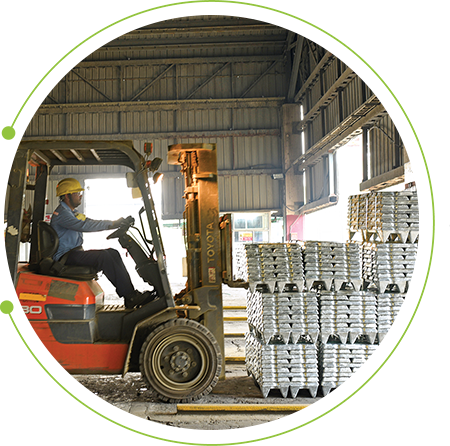
Some of the best practices adopted for integrating sustainability in the supply chain, include:
- Appropriate uses of Personal Protective Equipment (PPEs)
- Registration of suppliers, vendors and service providers through online ARIBA PORTAL wherein sustainability aspects are included
- Ensuring compliance for contract workers’ compensation and welfare management like provident fund, insurance, applicable wages and canteen facilities
- Suitable provisions in the contract for induction/ vocational training
- Issuance of gate passes to contract labourers after successful completion of the induction/ vocational training
- Review meetings with contractors, performance score cards prepared on monthly basis related to quality of work, machinery, manpower availability, house-keeping, HSE aspects and others
Performance linkage with contract
All business partners across value chains are evaluated on EHS aspects through Pre-Qualification (PQ) process on various attributes such as organisation’s safety, health and environmental indexes, policies and practices, commitment to the global norms apart from other conventional aspects.
Monthly payments are also linked with performance and safety score for partners having long-terms agreements. Key Personnel from business partners are part of our safety committees at sites to create sense of ownership among them.
Modern Slavery Act - Human rights due diligence of our suppliers
We conducted Human Rights audit for our vendors in two phases. In the first phase, we have conducted an online test in which they have filled all the details which are explained and validated by KPMG through call.
In the second phase, we have circulated a training module to all the high risk and moderate risk vendors. For high risk vendors, we have conducted an on-site audit by a third-party where they have verified and submitted a report. For vendors with moderate risk, we have taken an undertaking that they have gone through the training module and following it in their business model.
Case study
Third-party assessment of supply chain practices
A detailed supplier sustainability assessment questionnaire was developed, which includes criteria on environmental standards, human rights, occupational health and safety, business ethics, social and governance criteria.
Critical suppliers were identified for a detailed sustainability assessment based on the guidelines as per our supply chain management strategy. The assessment criteria and evaluation parameters were categorised as per the nature of risks:
- Critical risks: Systems not in place; not meeting legal licences, permits
- Major risks: No system, largely non-compliance
- Moderate risks: System are in place but observed gaps in formulation of comprehensive policies and SOPs
- Minor risks: Systems largely in place but found few evidences
The assessment indicators broadly spanned three areas:
Health and safety indicators focussed on compliance with the laws and regulations applicable, capacity to detect, assess, avoid and respond to potential threats to workers’ health and safety, degree of active cooperation with workers (and/or their representatives) when developing and implementing systems for occupational health and safety.
Social indicators focussed on workers’ right of collective bargaining, decent working hours and timely compensation, protection of child labour, young workers, bonded labour and supplier’s compliance with the government’s labour regulations.
Environmental indicators focussed on suppliers’ energy use, hazardous and non-hazardous waste storage and disposal mechanisms and natural resource conservation activities (if any), preventive or mitigating measures and compliance to environmental regulations
Outcome
The comprehensive project gave HZL an opportunity to build long-term relationships with the suppliers. It also motivated the suppliers to comply with more stringent regulations and more ambitious industry commitments.
Moving forward, HZL aims to empower their suppliers even further to share responsibility for human rights, and help them build their own management systems and internal controls.
Due diligence of Vendors
We have taken this step to ensure we are dealing with vendors who follow the regulations. In Phase-I, 600 vendors were covered. Various economic, social, environmental and governance criteria were considered for evaluation. We engaged two parties to do this extensive due diligence of our vendors. A total of 600 vendors were covered by third-party consultants. Out of 600, external agencies identified 44 suppliers as high risk suppliers. Based on the report findings, we are making a comprehensive action plan.
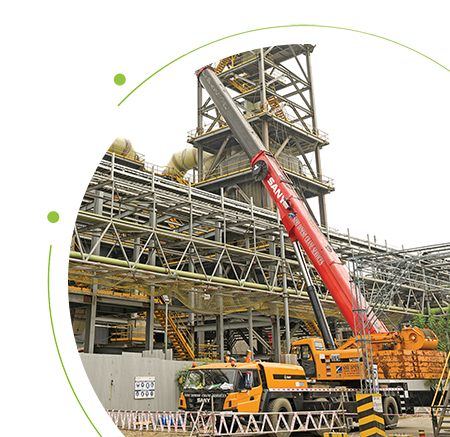
Supplier engagement
Apart from audit, review and corrective actions, we engage with our suppliers on a continual basis, as we believe collaborations bring out the best results and help in mutual prosperity and growth. There is also a structured vendor engagement plan in place across all levels.
Health and fitness
We ensure health and fitness of our partners on a regular basis through routine medical check-ups. We provide accommodation and other amenities to contractors, such as, sanitation facilities, food and medical facilities.
Supplier training
We regularly invest in skill development for our suppliers and contractual workers. All the contractors are part of induction safety training, on-the-job safety training, safety townhall and other awareness activities.
One of our key programmes is the ‘Driver Education Programme’. Here, we organise regular in-house camps, at individual plant levels, to create safety awareness among the drivers for our Vehicle and Driving Safety Standard. We have designed the safety training programme covering vehicle and driving safety standard, life saving rules, learning from past incidents, awareness for No Go criteria, housekeeping , parking area rules etc. We are carrying out training for the drivers and enhancing their understanding of road safety through an agency institute of driver safety and fleet management. We also conducted a parking area modification and seat belt awareness training through seat belt convincer.
We strictly follow our Vehicle and Driving Safety standard and No Go criteria, under which only 100% fit vehicles are allowed in our locations.
Business partner meet
During the year, business partner meet was conducted at Rampura Agucha Mine with the theme ‘Digitization and Innovation’. During the meeting latest technological initiatives, business plan, cost-effective measures, compliance and grievances were discussed.
Awards like Best Performer in Safety and Performance, Best Performer in Digitalisation were awarded during the meeting.
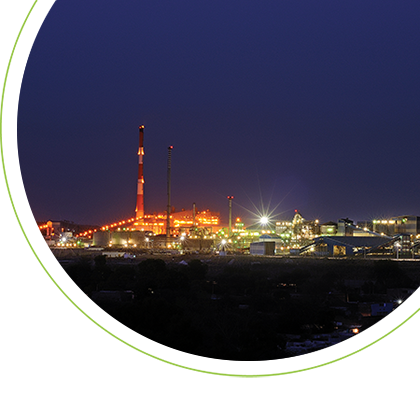
WASH Pledge
We are committed to providing water sanitation and hygiene (WASH) facilities to all our workers, especially focussing on women workers. We have taken the Wash Pledge as part of the World Business Council for Sustainable Development (WBCSD) initiative.
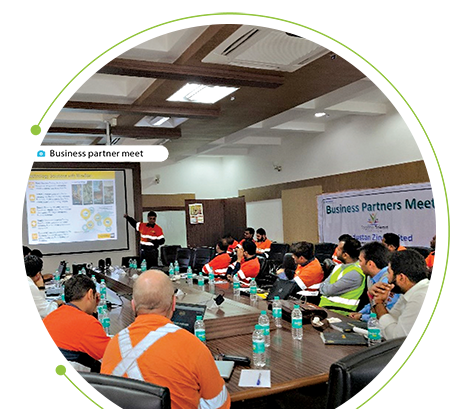
Case study
Design intervention for drivers' awareness on traffic safety
To counter the relaxed attitudes of drivers who no longer are in traffic, identifying blind spots and managing reduced sightlines because of parked vehicles, managing frequent turning of delivery trucks, distracted drivers and pedestrians, and to minimise the man machine interactions, we have made following changes in our CLZS parking yard:
- Auto Sequencing based improved Gate Management of inbound parking to avoid congestion at the gate and minimising the queue
- Rest room area for drivers and safety awareness video shown to them during their leisure time
- Better systems to ensure reverse parking, installation of convex mirror, applying wheel chalk in parked vehicle and a distance is being maintained to avoid vehicle collision
- Footover bridge to avoid man and vehicle interaction
- Seat belt convincer installed for raising awareness towards the importance of buckling up while driving, drivers can understand the impact on the body during rollover crash
- Display board for raising safety awareness

Technology and innovation in supply chain
We have undertaken several measures to digitise processes in our supply chain. Some of these include a thorough monthly spend based on the data generated by the SAP system. Smart touch-less purchase order for annual rate contract has been introduced, ARIBA Phase-II has been launched to improve Total Cost of Ownership (TCO) and technological investments.
Bulk lubrication system at Sindesar Khurd Mines
For efficient handling of lubricants from storage tanks to workshops, 50 KL-tank Bulk Lubrication System for handling fresh and used hydraulic oil, is being established. This will facilitate transfer of oil through pipelines resulting in efficient handling of lubricants.
Sindesar Khurd underground mine plans to increase production capacity from 5.5 MTPA ore to 6 MTPA in FY 2020. The current consumption of around 240 barrels (50 KL) of hydraulic oil per month is distributed among the existing four surface workshops through barrels. The transfer of fresh and used oils is also through barrels. Similarly, the used oil is also handled through barrels. In addition to contamination of oil due to storage under sun or rain, frequent handling of barrels requires new barrels and results in wastage of fresh oil in every barrel.
After commissioning of the proposed system, hydraulic oil will be supplied through bulk tankers resulting in reduction in wastage of oil, efficient handling of lubricants, elimination of contamination in oil and reduction in number of plastic and MS drums.

Integrated Transport Management System (TMS)
This is a one-of-its-kind system that we initiated. This helps in real-time tracking of raw materials, semi-finished and finished goods without any human intervention.
Logistics excellence through Integrated Transport Management
Logistics is a key process involving movement of Millions of tonnes of materials across various units of HZL and to the customers. This activity has high business risk in terms of pilferage, safety, and delayed delivery of goods.
To eliminate this risk through technology and innovation, Integrated Transport Management System (also known as TMS) has been introduced. The salient features of this system include route deviation alert and fleet breakdown notifications, which have helped us reduce the turnaround time.
Moreover, with prior registration of drivers and vehicles, the risk of unauthorised entry in the premises has been averted and it has in turn improved safety and security of transporters. Our end-to-end processes, from loading to unloading have all been automated. This includes gate entry, weigh bridges, geo fencing and digitally signed invoicing.
Project Saarthi
HZL’s Logistics Transformation Project, Saarthi, was aimed at transforming overall logistics efficiency by setting up a Command & Control Logistics Centre with standardised workflow processes and dashboard.
It also aims to revamp transport vehicle turnaround time at our locations and transit time of inter-unit movements. The eventual goal is to standardise our processes, establish real-time visibility of our supply chain, reduce costs and have audit trail of all deviations.
Saarthi will result in
- Operational efficiency by redefinition and simplification of processes
- Automation for reduced manual activity and safety resulting in higher efficiency
- An integrated Command & Control Centre with limited pre-agreed functionalities at the locations, encompassing CCTV, GPS and Integrated Transport Management Systems (ITMS) will include functionalities like GPS, additional sensors/displays at critical locations, track and trace dashboard and so on
- App for transporters which will help them track and trace their vehicle running for HZL, which includes transporter performance matrix, vehicle health check standards
- App for drivers where they can see the navigation of ideal route which is followed, receive the notification via SMS and Mobile wherever needed for optimised routes, which will help them reduce Transit Turnaround Time
Auto invoicing as the truck leaves
Automated process has been enabled for creation of logistics service provider invoice as the truck leaves the plant.
Alternate local vendor development
Many of the items such as spares for pumps, refractory, spares for cell house equipment, etc. which are being imported from European suppliers were developed from reputed Indian suppliers.

Project Lead
Vikas Adlakha
Implementation of Project Sarathi brings seamless efficiencies in the logistics operations with autoalerts of deviations with audit trails, standardized workflows & dashboards.
"I can proudly say that it is the most advanced Logistics automation in Asia and will facilitating reduced turnaround & transit times for material movement and control on pilferages & costs."
Waste to wealth initiative and associated benefits
An Ancillary plant has been installed adjacent to our Dariba Smelter Complex to recycle wastes generated from our smelting process like zinc process residue, lead residue, etc. With this initiative we have been able to improve recovery of Zinc, Lead and Silver from wastes, minimise import of Copper Sulphate. Setting up of this ancillary plant is a win-win situation for both HZL and the suppliers. While creating wealth out of mining waste, this initiative has also supported local production bringing in supply chain efficiencies.
Ancillary plant at Chanderiya Lead Zinc Smelter (CLZS)
During the manufacturing process of zinc and lead, a lot of process residues get generated. At present majority of the residues are being sold to registered authorised processors. Raw Zinc Oxide (RZO) is one of the work-in-progress materials, which was being used in Pyro plant. Consequent to the conversion of Pyro sinter to lead sintering, usage of RZO has been reduced and therefore it has been decided to treat this RZO through Hydro route by setting up an Ancillary unit at CLZS. Other process residues will also be treated in this ancillary as well.

